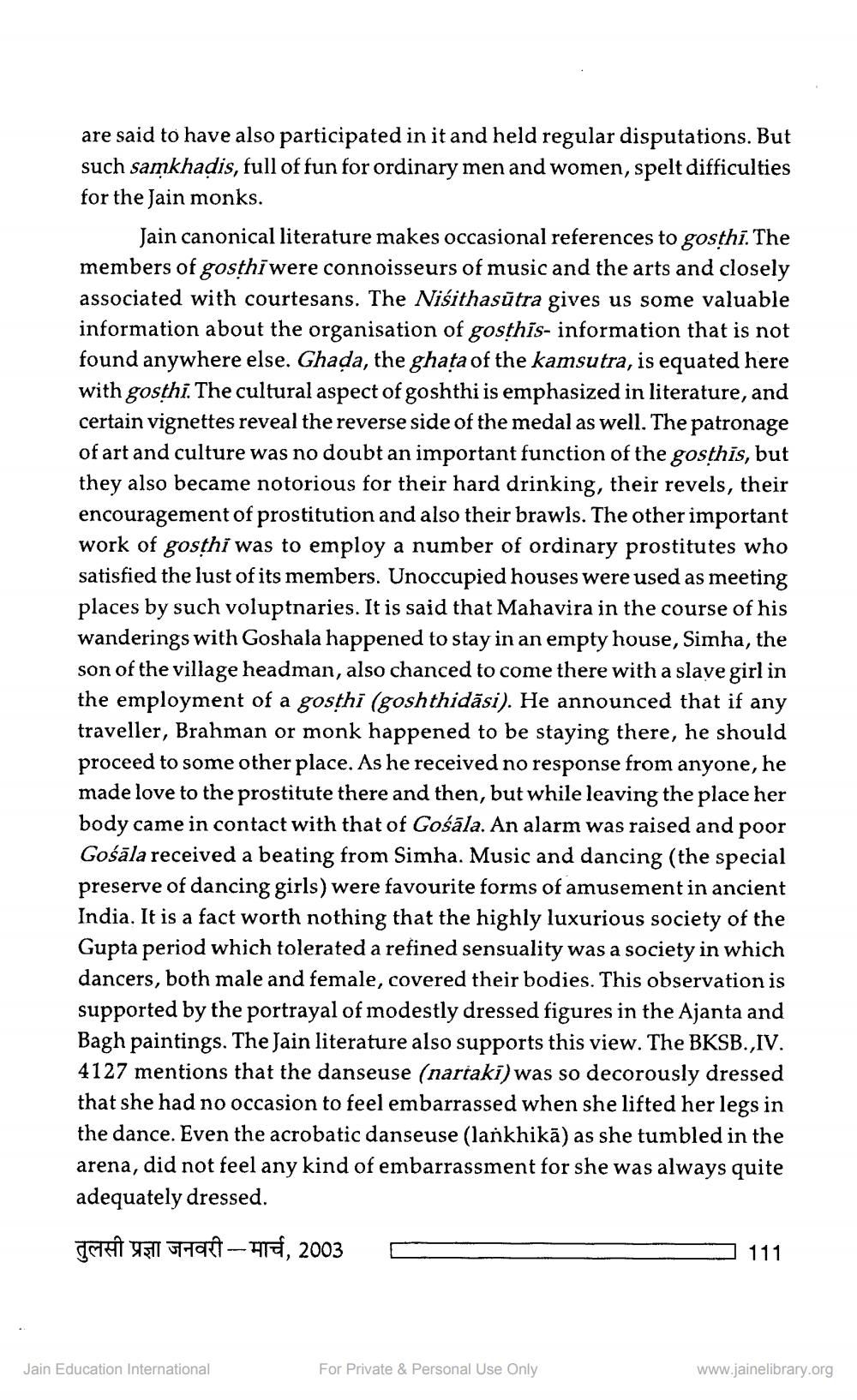________________
are said to have also participated in it and held regular disputations. But such samkhadis, full of fun for ordinary men and women, spelt difficulties for the Jain monks.
Jain canonical literature makes occasional references to gosthi. The members of gosthi were connoisseurs of music and the arts and closely associated with courtesans. The Nisithasūtra gives us some valuable information about the organisation of gosthis- information that is not found anywhere else. Ghada, the ghata of the kamsutra, is equated here with gosthi. The cultural aspect of goshthi is emphasized in literature, and certain vignettes reveal the reverse side of the medal as well. The patronage of art and culture was no doubt an important function of the gosthis, but they also became notorious for their hard drinking, their revels, their encouragement of prostitution and also their brawls. The other important work of gosthi was to employ a number of ordinary prostitutes who satisfied the lust of its members. Unoccupied houses were used as meeting places by such voluptnaries. It is said that Mahavira in the course of his wanderings with Goshala happened to stay in an empty house, Simha, the son of the village headman, also chanced to come there with a slave girl in the employment of a gosthi (goshthidāsi). He announced that if any traveller, Brahman or monk happened to be staying there, he should proceed to some other place. As he received no response from anyone, he made love to the prostitute there and then, but while leaving the place her body came in contact with that of Gośāla. An alarm was raised and poor Gośāla received a beating from Simha. Music and dancing (the special preserve of dancing girls) were favourite forms of amusement in ancient India. It is a fact worth nothing that the highly luxurious society of the Gupta period which tolerated a refined sensuality was a society in which dancers, both male and female, covered their bodies. This observation is supported by the portrayal of modestly dressed figures in the Ajanta and Bagh paintings. The Jain literature also supports this view. The BKSB. IV. 4127 mentions that the danseuse (nartaki) was so decorously dressed that she had no occasion to feel embarrassed when she lifted her legs in the dance. Even the acrobatic danseuse (lankhikā) as she tumbled in the arena, did not feel any kind of embarrassment for she was always quite adequately dressed. TAH YEH - HEE, 2003
= 111
Jain Education International
For Private & Personal Use Only
www.jainelibrary.org




